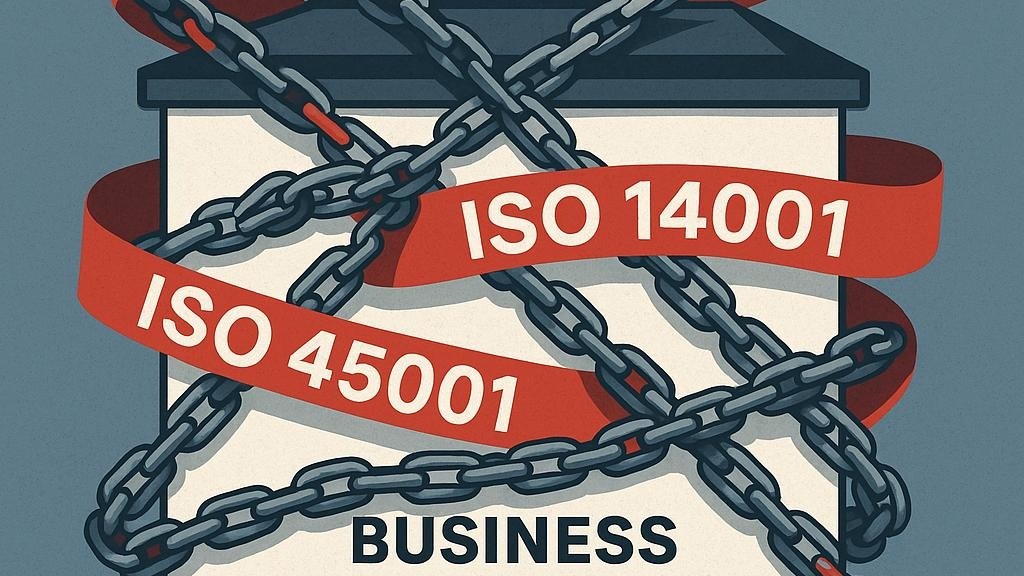.png)
The Future of Compliance for ISO Standards: Navigating a Changing Landscape

.png)
The Future of Compliance for ISO Standards: Navigating a Changing Landscape

The Future of Compliance for ISO Standards: Navigating a Changing Landscape
In a world where regulatory environments are becoming increasingly complex and interconnected, compliance with ISO standards is undergoing a significant transformation. What once relied heavily on manual processes and static documentation is now being reshaped by digital technologies, evolving risks, and heightened expectations for transparency and sustainability. As organizations adapt to global challenges—from climate change to cybersecurity threats—the future of ISO compliance is moving toward a smarter, more integrated, and continuous model.

Digital Transformation: From Paper to Platform
One of the most noticeable shifts in ISO compliance is the digitization of management systems. Traditional audits and document-based assessments are giving way to cloud-based compliance platforms, automated monitoring tools, and AI-driven analytics. These innovations enable real-time data collection, better risk visibility, and faster corrective action, making compliance more dynamic and efficient.
Key developments include:
- AI and machine learning to identify compliance risks or trends.
- Blockchain for immutable audit trails and supply chain verification.
- IoT devices to monitor quality, environmental, or safety parameters in real time.
These tools don’t just enhance compliance—they transform it into a continuous, value-generating process. Traditionally, compliance was heavily manual—requiring extensive documentation, on-site audits, and reactive processes. But now, we’re entering an era where data is real-time, systems are interconnected, and decision-making is increasingly predictive rather than retrospective. This evolution isn’t just a matter of convenience—it’s becoming essential for businesses to stay compliant, competitive, and resilient in a fast-changing world.
How to Prepare for the Shift to Digital ISO Compliance
To help you prepare, let’s break down the key components of this digital transformation and what you can do to adopt them effectively:
1. AI and Machine Learning: Predictive Compliance and Risk Detection
What It Means:
Artificial intelligence (AI) and machine learning (ML) can now analyze massive amounts of compliance-related data to identify patterns, detect anomalies, and predict where future issues might occur. For example, ML can flag recurring non-conformities across multiple sites or suggest root causes based on past audit results.
How to Prepare:
- Digitize your data: Begin by centralizing and digitizing historical compliance records. The quality of AI outputs depends on the quality of input data.
- Adopt compliance software with AI features: Choose platforms that offer predictive analytics or risk scoring tools. If a platform isnt yet offering AI solutions even for simple activities such as document creation etc, then its already behind the curve
- Train your team: Your staff may need to learn basic data literacy and how to interpret AI-generated insights to take appropriate action. Be warned, if youre not training your staff in digital and AI requirements for your business, the danger is they could be using it without your knowledge, leading to concerns over data security and integrity.
Benefits:
- Early warning of compliance breaches.
- Smarter allocation of audit resources.
- Reduced manual workload for compliance officers.
2. Blockchain: Tamper-Proof Records and Supply Chain Transparency
What It Means: Blockchain technology creates a decentralized and immutable ledger of transactions or events—meaning once something is recorded, it can’t be altered. In the context of ISO compliance, this can be used for:
- Verifying the authenticity of supplier certifications.
- Tracking product quality data across the supply chain.
- Ensuring audit trails are secure and trustworthy.
How to Prepare:
- Assess your supply chain visibility: Identify where data gaps or trust issues exist in your supply chain.
- Explore blockchain-enabled platforms: Some compliance or ERP systems now offer blockchain integrations.
- Collaborate with stakeholders: Work with suppliers, partners, and auditors to adopt blockchain practices where they add the most value.
Benefits:
- Stronger evidence for audits and certifications.
- Improved accountability and trust in supply chains.
- Enhanced protection against fraud or falsified data.
3. IoT (Internet of Things): Real-Time Monitoring of Compliance Parameters
What It Means: IoT devices can continuously monitor variables like temperature, humidity, vibration, or air quality—sending real-time data to your compliance system. This is especially useful for standards like:
- ISO 9001 (Quality Management) – real-time monitoring of product tolerances.
- ISO 14001 (Environmental Management) – live data on emissions or waste.
- ISO 45001 (Health & Safety) – monitoring noise levels, air quality, or worker activity.
How to Prepare:
- Identify high-risk or critical areas in your operations where real-time data could improve compliance.
- Invest in IoT infrastructure such as sensors, smart meters, or connected equipment.
- Integrate IoT data with your management system: Ensure your platform can capture, store, and analyze IoT data meaningfully.
Benefits:
- Immediate visibility into compliance issues.
- Faster corrective actions.
- Lower risk of non-conformance due to manual oversight or delays.
The Bigger Picture: Building a Smart Compliance Ecosystem
Digital tools don’t just make ISO compliance more efficient—they redefine what’s possible. The end goal isn’t just to meet audit requirements, but to create a living management system that:
- Learns and improves over time.
- Delivers continuous assurance to stakeholders.
- Supports strategic decision-making.
In summary - a checklist of things you should be thinkng about to prepare for this future;
✅ Conduct a digital maturity assessment of their current compliance processes.
✅ Build a roadmap for technology adoption aligned with ISO objectives.
✅ Engage IT and compliance teams together—this is no longer just a quality department issue.
✅ Focus on change management and upskilling—people are key to successful digital transformation
Start using Q-Hub today
- Manage compliance in one place
- Streamline your teams and tasks
- Use Q-Hub free for 30 days






